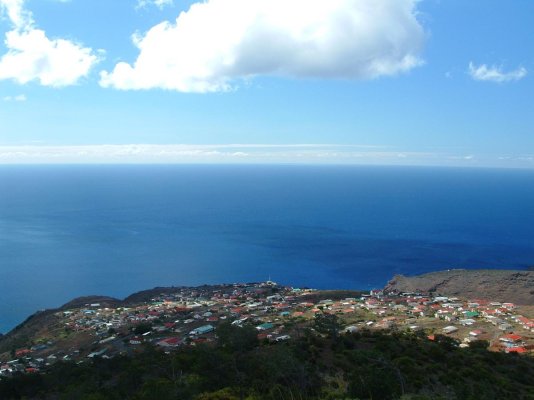Realize that St Helena is about 1,000 NM west of Angola/Nambia. You won't be going there in anything short of a Krogen, Nordhavn or others of its type. You need range, hull strength, stability and robust and redundant systems to make that trip- with or without stabilizers.
If you were to make that trip in a boat like those with stabilizers, you need to be prepared to make it safely (albeit uncomfortably) without stabilizers if they were to fail. That is the general principle of blue water cruising- robust, redundant systems when possible but the ability to continue without them. You won't have Nordhavn's support crew on that trip -

.
FWIW, here is what one Active Captain reviewer said about St Helena:
Date: 2016-03-24
Captain: El Sordo, Hiawassee (10)
This is an island in transition. The monthly ferry is scheduled to cease operations in June, 2016 and the airport is to open at the same time. The times they are achanging. For now it's a friend;y place to visit and cruisers are welcome. They have moorings, yellow if you are under 20tons displacement and red if you are over. The price is 40 pounds a month or 10 pounds per day. Local ferries monitor channel 16 and will usually be happy to come out to get you. The ferries start early to accomodate the fishermen and usually cease operation around 8 pm unless you make special arrangements. Standard rates are 2 pounds per round trip, but if you was a return trip after hours is gets up to 3 pounds Diesel is delivered by lighter and cost 1.22 pounds/liter on Feb 1, 2016.The same lighter will deliver water in jerry cans in large quantities at no additional charge. The was nothing along the lines of a chandlery while we were there, although a hardware store had some usable items.By careful selection and prudent shopping we had fresh food all the way across to the caribbean. If the wind hauls around to the west, the anchorage will be lively.Plan to pay cash for everything. There are no ATMs on the island and you have to get you currency at the bank and pay a premium. Internet is available on the island, but it's controlled by a monopoly and is excruciatringly slow and cost 3.30pound for 30 minutes. I assume the lack of credit cards is related to the absence of viable internet for verifying. There are some Finnish people on the porch of the Consulate hotel who will take orders for fresh baked bread. It has no preservatives, but is delicious while fresh. Go to the visitor center and arrange a tour. It's a unique and interesting place to visit should you find yourself riding the current past Namibia.
Here is another:
Date: 2012-01-20
Captain: foolishsailor, Ireland (283)
We throughly enjoyed St. Helena and stayed for 2 weeks. We rented a car to see the island which I highly recommend - especially Napoleans Tomb and Horse Point.The owner of the Consulate Hotel on the main street (its a onle lane town so hard to miss it) is an ex-cruiser and very helpful. The hotel chef prepared 12 meals and deep froze them for us prior to our passage. Ann's PLace is a cruiser hangout with a great view of the bay. If the Cape Town to Salvedor Rally is in town it can get quite rowdy!If you have the legs for it you must climb Jacobs Ladder and the windy trails into and out of the valley make for great views and hikes.The anchorage is bad - no other way to say it. The holding is good but it is deep and there is only a small shelf before it gets really deep really quickly. The bottom adrops off quickly to 4000m outside the anchorage, so a dragging anchor can mean a boat adrift. This happened to two boats while we were there - onel while the guy was asleep at night and the other while the owner was at Ann's looking down on his boat... The anchorage is exposed to weather from the north and in the early months of the year the open swells that roll in can make the anchorage unlivable and make landing via the harbor ferry impossible.We would go back any day though - it was a blast.
David


